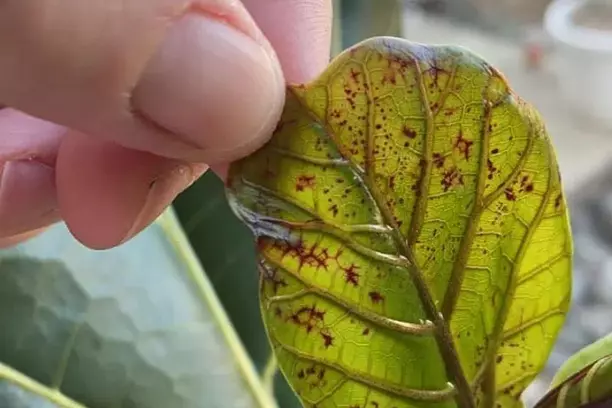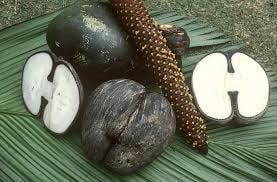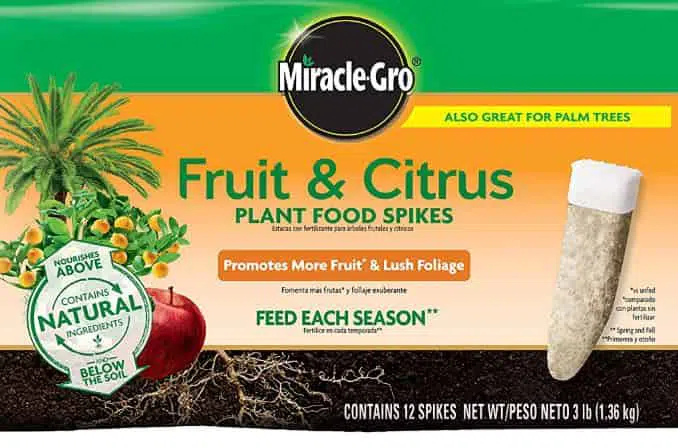Adult spider mites appear as small reddish-brown or pale dots on plants. When they infest plants, you’ll notice patterns of silvery dots and small, delicate webs on the stems and undersides of the plant’s leaves. If they stay for long, the leaves of the infested plant become mottled and eventually drop. So, how do you get rid of spider plants?
Mix neem oil with water and dish soap in a spray bottle and spray the infested plants, covering stems and the undersides of leaves where spider mites like to hide. Repeat the after 7 days to kill all the spider mites, their eggs, and larvae. This treatment is safe for indoor and outdoor plants.
Spider mites are very tiny pests that are barely visible to the naked eye, but you can use a hand lens to visually identify them.
- Adult spider mites are about 1/20 of an inch in length.
- Physically, these arachnids are oval-shaped and lack wings.
- Their mouthparts have a needle-like appearance.
These pests are common on ornamental plants including hibiscus, roses, lavender, and rosemary. They can cause significant damage to your indoor plants if not controlled soon enough.
Signs of spider mites on plants
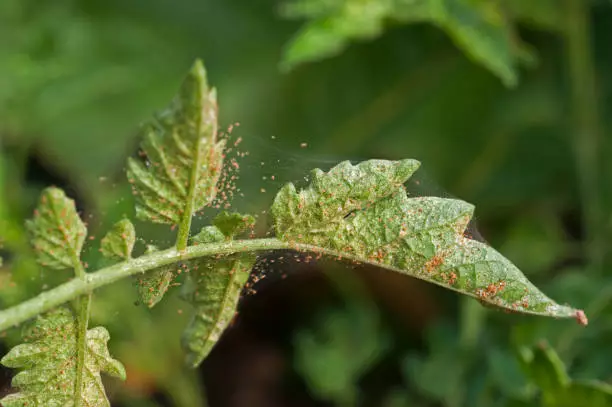
Identifying spider mites through their physical characteristics is key in their control. You want to make sure you’re dealing with a spider mite infestation before applying the treatment. Always check the underside of the leaves because that’s where spider mites love to reside.
Here are the signs of spider mites on plants:
1. Mottled or flecked leaves
If you still aren’t sure what the small pests creeping on the leaves of your garden plants are, a simpler way to identify whether you have a spider mite infestation in your garden is by checking for the signs of spider mite damage on the plants.
The most obvious sign is when the leaves look flecked and are spotting pale dots. This happens as a result of the spider mites piercing through the leaf tissues using their sharp mouthparts to suck the juices from the plant cells.
2. Leaves turning yellow or bronze
You can also tell you have a spider mite problem in your garden when the leaves of your garden plants turn to a yellow/bronze shade, with some of them falling off the plants prematurely. This occurs as a result of the spider mites overfeeding on the plant juices, causing drought stress on the leaves.
Leaf yellowing/bronzing usually happens at the advanced stages of spider mite infestation when their populations have greatly multiplied. At this stage, you’re probably dealing with a severe infestation.
Even though spider mites typically spend most of their time on the underside of the leaves, you can still spot the damage from the upper leaf sections- including pale spots and yellow leaf parts. Extreme invasions may also stunt the growth of the houseplants, or cause them to wilt and die.
3. Translucent or bright red spots (eggs) on leaves
Another tell-tale sign of spider mite infestation is the presence of translucent or bright red eggs (depending on the species), especially on the lower side of the leaves. The eggs usually have a spherical shape.
Additionally, as young spider mites advance from the larval stages into adulthood, they usually shed skin, which can be spotted on the plant foliage as pale-hued cast skin.
4. Small silky webs on the plant
The presence of silk strands on the foliage of your garden plants is usually one of the strongest pointers toward spider mite invasion. These silk webbings produced by spider mite glands aid these wingless pests to spread out to new, non-infested foliage.
How to get rid of spider mites on plants naturally
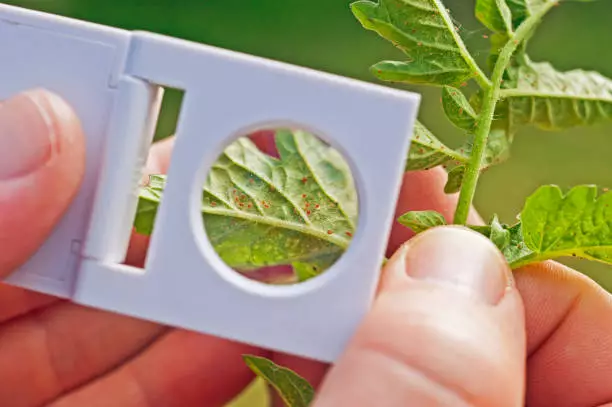
If you want to control spider mites without using chemicals, a great alternative would be to try out various natural remedies. The homemade remedies I’ve discussed below work well, but you should use them with caution as some of them can cause damage to sensitive plants.
Here’s how to get rid of spider mites naturally (without chemicals):
1. Prune off infested foliage
Being wingless, spider mites are slow movers so it takes some time for them to move from one leaf to the next. Therefore, one natural way to get rid of them at the early stages of infestation is by cutting off the infected leaves.
Identify affected leaves by checking for silky webbing and a flecked appearance then cut them off. Dispose of the leaves by burning or throwing them in soapy water to minimize the chances of re-infestation.
2. Use a pressure washer to dislodge spider mites
You can also use a pressure washer to spray infested plants and dislodge the spider mites off them. Narrow the spraying nozzle to increase the pressure of the water being sprayed. This will get rid of the unsightly silk webs spun by these pests on your ornamental plants as well.
When showering the plants with water to remove spider mites, focus on the undersides of the leaves, as this is where spider mites prefer to reside.
Caution: Do not use extreme pressure on delicate plants, or those that have new buds. You can easily end up damaging the plant while treating spider mites.
3. Apply an insecticidal soap solution
A dish soap solution is also another natural solution for spider mite infestations. All you have to do is mix a few drops of dish soap with a liter of warm water and stir the mixture. You can then transfer the solution into a spray bottle and spray the infested plants to kill the spider mite. Alternatively, you can dip a cotton swab into the solution and repeatedly wipe down the infected leaf surfaces.
The soap solution works by coating the bodies of these pests, thereby choking them to death. The fatty acids contained in the soap seep into the internal organs of the spider mites, consequently dehydrating them to death.
4. Use neem oil for spider mites
Neem oil is another natural solution for getting rid of various types of plant pests- spider mites included. Simply mix neem oil with a few drops of Dawn dish soap and warm water to create an insecticidal solution. Transfer the solution into a spray bottle and spray infested plant parts- including the foliage and stems. For the leaves, make sure to reach the undersides.
The neem oil will kill the spider mites by triggering hormonal disruption. The fact that it isn’t harmful to pets and birds makes it one of the most effective natural pest remedies.
5. Use a vinegar-solution
Vinegar’s acidic nature makes it a great deterrent for spider mites. To make a vinegar-based insecticidal spray, mix ¼-cupful of apple cider vinegar or white vinegar with a few drops of dish soap, a tablespoonful of baking soda, and a liter of warm water. Spray the vinegar solution on spider mites to kill them naturally.
6. Use rubbing alcohol
To eliminate spider mites on household plants using rubbing alcohol, mix it with warm water in a ratio of 1:1. Then, dip a cotton swab into the solution and wipe the infested leaves, especially the lower sides, to kill the spider mites.
Take note, however, that the rubbing alcohol solution may cause leaf burn on some types of garden plants. If this happens, it means that the solution is too strong and should be diluted further to a 1:3 ratio.
Pro tip: Test out this remedy on a small section of the affected plants and only proceed to the rest of the infested parts if there are no visible signs of leaf burn or damage.
7. Introduce natural predators for spider mites
The use of biological controls includes the introduction of beneficial insects that feed on spider mites into your garden. Spider mite predators include ladybugs, minute pirate bugs, lacewing, and western flower thrips.
You can purchase these beneficial spider mite predators from your local nursery or even on Amazon. Before buying biological insects, do some research to identify whether they’ll pose a threat to your garden plants too.
8. Apply Diatomaceous Earth (DE) on infested plants
Diatomaceous Earth, which is a mineral, has for years been used as a natural pesticide against spider mites. It works by eating through the outer part of these pests’ cuticles, consequently dehydrating them. You can apply DE directly onto the plant foliage or into the soil in which the plants grow.
9. Use cayenne pepper mix
Mix a teaspoonful of cayenne pepper with a cupful of warm water and transfer the solution into a garden spray bottle. Spray this homemade spider mite killer onto the infested plants repeatedly until they all die. Cayenne pepper solution kills spider mites by inhibiting their ability to feed.
10. Use garlic spray
Mash two garlic cloves, then mix them with a liter of water. Let the solution sit for about 12 hours- preferably overnight- after which you can transfer it to a spray bottle and apply it to your houseplants to get rid of spider mites.
11. Use hot-pepper wax
Mix cayenne pepper extract with food-grade wax to create an effective spider mite pesticide. Hot-pepper wax works by choking out the spider mites while also cutting out their ability to feed.
Chemical control to kill spider mites
Due to environmental concerns, I usually don’t recommend the use of chemical controls when you’re looking to control spider mite infestations. As you spray chemical pesticides on your garden plants, some of the particles seep into the soil and are washed away by runoff water. These chemical particles eventually find their way into rivers and oceans- significantly affecting aquatic life in the process.
Nonetheless, here are some of the most effective pesticides for controlling spider mites:
- Abamectin– effective in killing two-spotted spider mites.
- Fluvalinate– works on all types of spider mites.
- Fenpyroximate– used to control red spider mites and two-spotted spider mites.
- Deltamethrin– is used to control mites in general.
- Floramite– controls spider mites at all life stages- including eggs, nymphs, adults, and larvae.
Keep in mind that some pesticides will not only kill the spider mites, but also beneficial insects in your garden. You’ll also want to avoid using certain chemical pesticides if you’ve already introduced beneficial insects into your garden, as they’ll kill them too.
However, in instances of severe invasion or large gardens, chemical control methods may be the last and most-effective way to save your garden plants. Before using any chemical miticides to get rid of spider mites, read through your product label and take note of any instructions and precautions. This is because some chemical controls usually cause fading on the leaves of certain ornamental plants.
It’s also important to wear the necessary safety gear- including hand gloves and a face mask- when handling these harmful chemicals. Remember too that some of these chemical controls kill spider mites at all stages of development, including the eggs and larvae; while others only work on mature spider mites.
Also, some chemical pesticides work by penetrating the plant tissue and dehydrating the mites once ingested. Such pesticides won’t work on spider mites that are undergoing molting during the nymph stage.
At this stage, the young spider mites go into a dormant stage where they don’t feed- thus rendering such types of sprays ineffective. They may also resist pesticides that work by coating the skin and choking them out as they hide under their old layer of skin during this stage.
Controlling spider mites indoors
Spider mite control in indoor gardens and plants can be a difficult challenge due to the risk of harming kids and pets if toxic pesticides are used. As such, I wouldn’t recommend using commercial pesticides that contain harmful chemicals. Instead, you should use a safe bio-pesticide that won’t harm your kids or pets. The best bio-pesticide for use in indoor gardens is rosemary oil.
Using rosemary oil to kill spider mites indoors
Rosemary oil extract, when mixed with water, creates a lethal solution that will kill spider mites on contact. This organic treatment is also safe for use on plants and can be sprayed onto edible plant parts without any negative effects.
Pour 2 liters of water into a garden spray bottle and 2 teaspoons of rosemary oil extract into it. Stir to mix and create an organic spider mite killer. Spray infested plants with the solution, covering all the leaves and stems. Repeat after 2 days if there are a few spider mites still surviving.
Spider mites in outdoor gardens
Controlling spider mite infestations in outdoor settings is even more difficult than in indoor settings. For starters, outdoor garden areas are typically exposed to external weather conditions. And since spider mites love to invade plants during the warm summer weather, these plants become more vulnerable to infestation during these seasons.
Additionally, since outdoor conditions may favor them, chances of re-infestation are usually still high even after repeated treatments using horticultural oils and pesticide soaps.
If the aforementioned strategies for getting rid of spider mites don’t work, you can minimize the chances of infestation by following the strategies detailed below:
Wipe plant leaves regularly
Spider mites thrive in relatively low humidity conditions. As such, one effective way to deter them is by raising the humidity levels around your outdoor garden plants. And what better way to do this than by wiping down the plant foliage with a wet piece of cloth now and then. While the moisture increases the humidity around the leaves, the wiping action knocks off any spider mites already lodged in the plants.
Water and fertilize your houseplants
Spider mites are more likely to attack unhealthy houseplants that are showing signs of stress. Therefore, to make your outdoor plants less vulnerable to spider mite invasions, make sure to water them and feed them with mineral nutrients as necessary.
Shade your outdoor plants
Spider mites love to invade dry leaves that have been overexposed to the sun’s heat. You can limit the chances of infestation by installing some type of shade that will only allow filtered sunlight to reach your outdoor garden plants.
Types of spider plants
To better identify whether the pests on your plants are spider mites, you need to understand the physical features of the five most common types of spider mites found on both indoor and outdoor plants. Here’s a brief overview of each of these spider mite species:
- Twospotted Spider Mite– scientifically known as Tetranychus urticae– this species of spider mite is arguably the most common as it can be found on ornamental garden plants, shrubs/vegetables, and field crops. As its name suggests, it has two dark spots- one on each side of its body; with a yellow-green hue covering the rest of its body. Twospotted spider mites thrive in hot summer weather and spin silky webs on the underneath infested foliage.
- European Red Mite– going by the scientific name Panonychus ulmi– this species of spider mite has a brick-red color during all stages of its life cycle. European red mites typically lay large amounts of bright red eggs on the lower side of the plant leaves. These may appear as red brick dust to the naked eye.
- Spruce Spider Mite– also known as Oligonychus ununguis– this type of spider mite prefers to attack conifers like spruce and pine. They boast a deep olive-brownish red shade and mostly invade during the cool season of late fall.
- Southern Red Mite (Oligonychus ilicis)– this spider mite species are commonly found on roses and other evergreens during the cooler months. As the name suggests, they have a red body color.
- Maple Mite (Oligonychus acari)– this member of the spider mite family boasts a red-pinkish hue and its eggs can often be spotted as bright-red spots on the barks of infested plants.
References:
[1] Saber Miresmailli and Murray B Isman: National Library of Medicine: Efficacy and persistence of rosemary oil as an acaricide against two-spotted spider mite (Acari: Tetranychidae) on greenhouse tomato.
[2] L. D. Godfrey, Entomology, University of California, Statewide Integrated Pest Management Program Davis: Spider Mites Management Guidelines
[3] Catharine Mannion, University of Florida IFAS Tropical Research and Education Center: Chemical Control of Mites on Ornamental Plants

